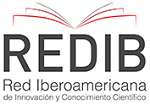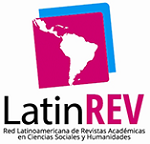Stop-motion as a didactic-technological component to reduce alcohol consumption in engineering students.
DOI:
https://doi.org/10.15649/2346030X.579Keywords:
Technology, university education, stop-motion, health orientation, promotion, alcoholism, didactic resources.Abstract
The objective of this research was to apply stop-motion as a didactic resource to reduce alcohol consumption in university
students of the Production School of the Universidad Iberoamericana del Ecuador (UNIB.E). For the execution of the study, a quantitative
paradigm, design and descriptive analysis study was designed. The study was executed in three phases. The first phase made it possible to
diagnose students' knowledge, beliefs and level of alcohol consumption through a questionnaire addressed to 30 university students of different
levels. In the second phase, a stop-motion was designed and used as a didactic resource for andragogic orientation. Finally, as a third phase, the
observation guide and the questionnaire were applied as a second instrument to record the attitudes and behaviours of the students. The results
showed that the attitudes of the students since post-adolescence are ephemeral effects of digital connectivism with a culture and society framed
by a high consumption of alcohol without considering the high risks that this shows.
References
Musitu, G., Suárez, C., Del Moral, G. & Villarreal, M. (2015). Alcohol consumption in adolescents: The role of communication, family functioning, self-esteem and consumption in the family and friends. Búsqueda, 2(14), 45-61. Doi: https://doi.org/10.21892/01239813.58
Organización Mundial de la Salud (OMS). (2014). Conceptual causal model of alcohol consumption and health outcomes. Global status report on alcohol and health 2014. Based in Rehm, 2010 and Blas, Ginebra.
Organización Mundial de la Salud (OMS). (2015). Salud mental: un estado de bienestar. Recuperado de: http://www.who.int/features/factfiles/mental_health/es/,
Ewan, W. (2018). Diagrams of Motion: Stop-Motion Animation as a Form of Kinetic Sculpture in the Short Films of Jan Švankmajer and the Brothers Quay. Animation, 13(2), 148-161. Doi: 10.1177/1746847718782890, 2018
Soto, P., Masalan, P. & Barrios, S. (2018). The health education a central element of nursing care. Revista Médica Clínica Las Condes, 29(3), 288-300. Doi: https://doi.org/10.1016/j.rmclc.2018.05.001,
Urrego, Z. (2010). Propuestas de Ajuste al Lineamiento de Política de Salud Mental para Bogotá, Lineamientos de Plan de Acción, de Salud Mental del Plan de Acciones Colectivas, y para el Mejoramiento de la Respuesta Asistencial en Salud Mental del Distrito Capital. Bogotá: Secretaría Distrital de Salud.
Moncada, M. y Ruiz, L. (2013). Documento Marco Conducta Suicida PDA Salud Mental. Bogotá, D. C.: Secretaría Distrital de Salud,
Hernández, E., Calixto, M. and Álvarez, A. (2018). Interventions to reduce alcohol consumption in adolescents: a systematic review. Enfermería global, 49, 529-539. Doi: http://dx.doi.org/10.6018/eglobal.17.1.284891,
Acosta, M., Juárez, F. & Cuartas, M. (2018). Executive Functions and Parental History of Alcoholism in Adolescents. Pensamiento Psicológico, 16(1), 57-68. Doi:10.11144/Javerianacali.PPSI16-1.fe,
King, K. M. & Chassin, L. (2004). Mediating and Moderated Effects of Adolescent Behavioral Undercontrol and Parenting in the Prediction of Drug Use Disorders in Emerging Adulthood. Psychology of Addictive Behaviors, 18, 239-249. Doi: 10.1037/0893-164X.18.3.239,
Craun, E., Majoney, C., Wgemer, S. and Wong, M. (2016). Neuropsychiatric disoders-3, The Intergenerational Effects of Alcoholism on Neurocognitive Functionating of Children of Alcoholics Versus Healthy Controls”. Archives of Clinical Neuropsychology, 31(6), 582. Doi: 10.1093/arclin/acw042.23,
Balogh, K., Mayes L. & Potenza, M. (2013). Risk-taking and Decision-making in Youth: Relationships to Addiction Vulnerability. Journal of Behavioral Addictions, 2(1), 1-16. Doi:10.1556/JBA.2.2013.1.1,
Casas, M. y Navarro, J. (2001). Hijos de padres alcohólicos: su nivel de ansiedad en comparación con hijos de padres no alcohólicos. Revista Latinoamericana de Psicología, 33(1), 53-58.
Agrawal, A. & Lynskey, M. (2008). Are There Genetic Influences on Addiction Evidence from Family, Adoption, and Twin Studies. Addiction, 103(7), 1069-1081. Doi: 10.1111/j.1360- 0443.2008.02213.x,
Bernal, P., Montaña, J., Acosta, R. & Rojas, Y. (2015). Performance of Children and Adolescents from a School of the City of Sogamoso on Decision-Making test. Open Journal of Pediatrics, 5, 339-347. Doi: 10.4236/ojped.2015.54051,
Hernández, R. y Villarreal, M. (2007). Consumption of alcohol in students in relation to consumption by family and Friends. Psicología y Salud, 17(1), 17-23.
Acheson, S., Bearison, C., Risher, M., Abdelwahab, S., Wilson, A. & Swartzwelder, H. (2013). Effects of Acute or Chronic Ethanol Exposure during Adolescence on Behavioral Inhibition and Efficiency in a Modified Water Maze Task. PLoS ONE, 8(10), e77768. Doi: 10.1371/journal.pone.0077768,
Clark, L. (2010). Decision-Making During Gambling: An Integration of Cognitive and Psychobiological Approaches. Philos Trans R Soc Lond B Biol Sci, 365(1538), 319-330. Doi: 10.1098/rstb.2009.0147,
García, C., Calvo, Fr., Carbonell, X. & Giralt, C. (2017). Binge drinking and risk sexual behavior among college students. Health and Addictions, 17(1), 63-71.
Martin, I. (2007). Estrés académico en estudiantes universitarios. Apuntes de Psicología Colegio Oficial de Psicología, 25(1), 87-99.
Kushner, G., Abrams K. and Borchardt C. (2000). The relationship between anxiety disorders and alcohol use disorders: a review of major perspectives and findings. Clinical Psychology Review, 20, 149-171.
Moscoso, M. (1998). Estrés, salud y emociones: estudio de la ansiedad, cólera y hostilidad. Revista de Psicología, 3, 47- 58.
Abraham, C. & Michie, S. (2008). A taxonomy of behavior change techniques used in interventions. Health Psychology, 27, 379–387.
Londoño, C. & Valencia, C. (2008). Assertiveness, resistance to group pressure and alcohol consumption in university students. Acta Colombiana de Psicología, 11(1), 155-162.
Krichesky, G. and Murillo F. (2018). Teacher Collaboration as a Factor for Learning and School Improvement. A case study. Educación XXI, 21(1), 135-156. Doi: 10.5944/educXX1.15080,
Guanipa, M. (2008). Guía de estudio. Venezuela: Universidad Rafael Belloso Chacín.
Adam, F. (2008). Universidad y educación de adultos. México: CEDEAL.
Pérez, S. (2009). Modelo andragógico. Fundamentos. México DF, 2009
Morales, O. y Leguizamón, M. (2018). Andragogy: successes and failures in teacher training in Ict. Praxis & Saber, 9(19), 161 – 181. Doi: https://doi.org/10.19053/22160159.v9.n19.2018.7926,
Fernández, A. & Barreira, A. (2015). Stop-Motion: Image and Communication Strategy for the improvement of coexistence. Revista de estudios e investigación en psicología y educación, 13, A13-195. Doi: 10.17979/reipe.2015.0.13.581.
Masterman, L. (1993). La enseñanza de los medios de comunicación. Madrid: De la Torre.
Falcó, M., Ñeco, L. & Torregrosa, E. (2016). From quantitative research to performative research: Researching in dance. El Artista, 13, 187-213,
Elizalde, A. (2010). Descriptive study of bullying coping strategies in Mexican faculty. Electronic Journal of Research in Educational Psychology, 8(1), 353-372.
Mendoza, D. (2018). Estrategias de enseñanza y su efectividad en los procesos de aprendizaje en los estudiantes de turismo de la Universidad Iberoamericana de Ecuador. Espacios, 39(43), 25-39.
Otzen, T. & Manterola, C. (2017). Sampling Techniques on a Population Study. International Journal of Morphology, 35(1), 227-232.
González, J. & Pazmiño, M. (2015). Calculation and interpretation of Cronbach's Alpha for the validation of the internal consistency of a questionnaire, with two possible Likert scales. Revista Publicando, 2(1), 62-77.
Díaz, L., Torruco, U., Martínez, M. y Varela, M. (2013). The interview, a flexible and dynamic resource. Investigación en Educación Médica, 2(7), 162-167.
Babor, T., Higgins, J., Saunders, J. & Monteiro, M. (2001). Cuestionario de Identificación de los Transtornos debidos al Consumo de Alcohol. Organización Mundial de la Salud.
Betancourth, S., Tácan, L., Cordoba, E. “Alcohol consumption in Colombian university students”. Rev Univ. Salud. Vol. 19, No. 1, pp. 37-50. DOI: http://dx.doi.org/10.22267/rus.171901.67, 2017
Méndez, J. & Azaustre, M. (2015). Alcohol consumption in university students. Study of the relationships between causes and negative effects. Revista Complutense de Educación, 28(3), 689-704. Doi: http://dx.doi.org/10.5209/rev_RCED.2017.v28.n3.49725,
Pérez, M., Reyes, M., Cabrera, L., & Pérez, A. (2016). Changing the beat: Fostering prevention of alcoholrelated violence in night-time leisure zones. International Criminal Justice Review, 26, 169-186.
Fagan, A., Hanson, K., Briney, J., & Hawkins, J. (2012). Sustaining the Utilization and High Quality Implementation of Tested and Effective Prevention Programs Using the Communities That Care Prevention System. Journal of Community Psychology, 49, 365-377.
Downloads
Published
How to Cite
Issue
Section
Altmetrics
Downloads
License
The journal offers open access under a Creative Commons Attibution License

This work is under license Creative Commons Attribution (CC BY 4.0).












